Learn to make a perfect Italian panna cotta with this step-by-step recipe. Serve with a sweet strawberry topping for extra indulgence!
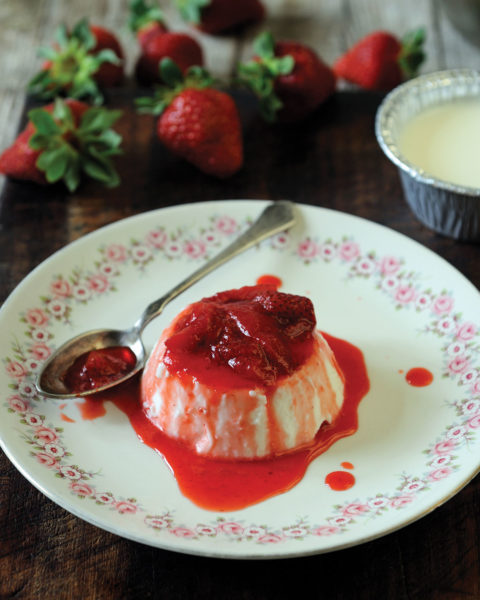
All images © Mario Matassa
In Italy, panna cotta, like tiramisù, zabaglione and budino, falls within that category of dessert known as dolci al cucchiaio – desserts that are to be eaten with a spoon.
Very little is known about this dessert except that it originated in the Piedmont region sometime in the early 1900s.
Today, it has gained national appeal and is enjoyed in bars, restaurants and homes throughout the country.
My personal opinion is that panna cotta is rooted somehow in cucina povera (a term that loosely translates to ‘peasant cooking’).
The simplicity in both the method and the ingredients suggest to me that this dessert originated in rural Italy as a low-cost option for something sweet, using ingredients that were easily accessible.
How to serve panna cotta
Arguably, the appeal of this dessert lies in its simplicity and versatility. In Italy, it is eaten all year round.
That’s because, although the method varies little, panna cotta is suited to a variety of flavourings and toppings.
Among the most popular are chocolate, coffee, caramel or, as in this panna cotta recipe, seasonal fruit.
I personally like the strawberry variation as it has the essence of eating a more elaborately worked version of the classic combination of strawberries and cream.
As for the method, there’s really very little to it. Most children in Italy learn how to make this simple Italian dessert recipe at a very early age!
It’s important to allow the gelatine time to soak, and equally important, once it has been added to the cream, to stir it in thoroughly until it has completely dissolved and there are no lumps.
Then there’s nothing to it, except to wait. That’s perhaps the most difficult part, actually – it takes about four hours for a panna cotta to set and cool.
Then it’s just a question of adding your preferred topping and enjoying your strawberries and cream, Italian-style!
Panna Cotta |Panna Cotta
➤ MAKES: 4 x 150ml tubs
➤ PREPARATION: 15 minutes
➤ COOKING: 4 hours
Ingredients:
For the panna cotta:
- 500ml fresh cream
- 5g vanilla essence (or 1 vanilla pod)
- 8g gelatine sheets (or vegetarian alternative)*
- 80g sugar
For the strawberry reduction:
- 300g fresh strawberries
- 80g sugar
- 1tsp lemon juice
Recipe:
Step 1
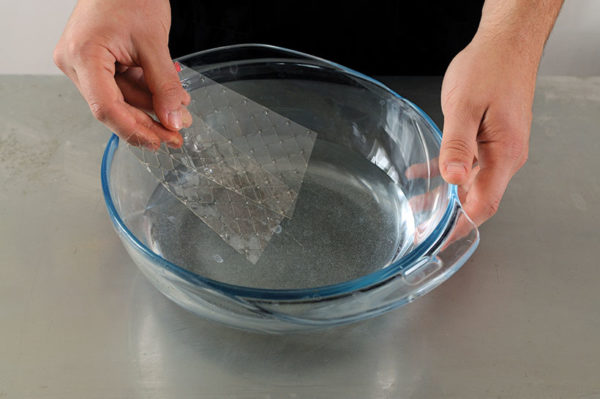
If you use conventional gelatine, as shown here, place the gelatine sheets into cold water and let them soak for about 15 minutes.
If you are using agar agar, follow the packet instructions very carefully. Agar agar is very strong! You will only require 0.9g to set 100ml of a neutral liquid.
Step 2
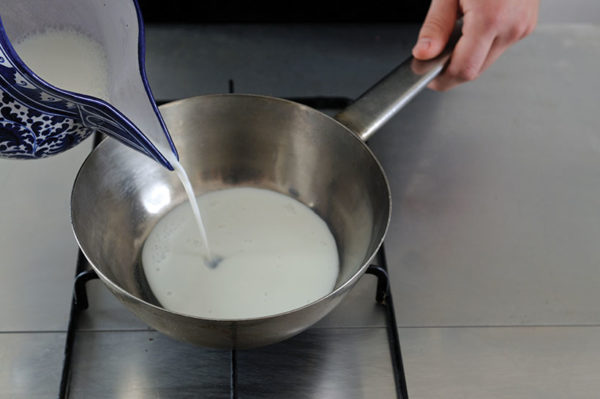
Pour the cream into a saucepan and add the sugar and the vanilla essence.
Heat gently, until the cream comes to a boil. Then take the pan off the heat.
Step 3
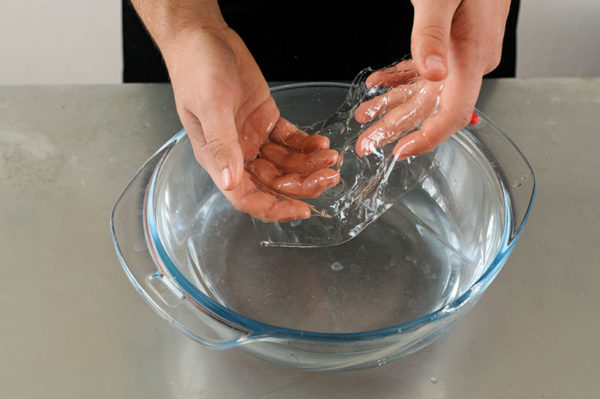
Now we get to the fun bit that young children get so excited about when they first learn to make panna cotta!
Scoop the gelatine out of the water it has been soaking in and gently squeeze out any excess water. The result should feel a bit like a ball of jelly.
Step 4
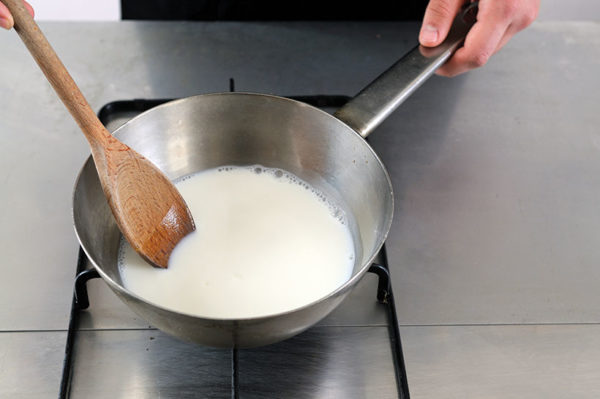
Returning to our pan of cream, place the gelatine into the pan with the cream and stir vigorously for about two minutes until the gelatine has completely dissolved and there are no lumps.
You need to be very thorough about this, so be patient and take your time.
Step 5
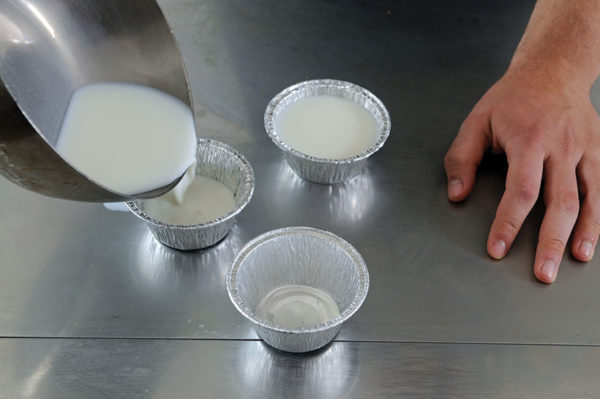
Pour the resulting mixture gently and evenly into moulds, as shown here. Alternatively, if you want to end up with a panna cotta to share, you could use one single 500ml panna cotta mould.
Put the moulds (or mould) into the refrigerator and leave for at least four hours, until completely set.
Step 6
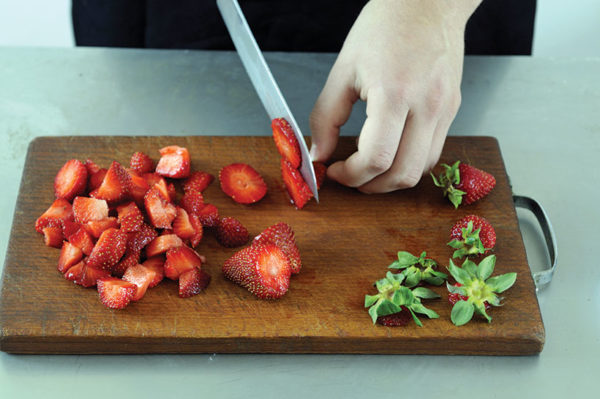
Now it’s time to prepare the topping. As we said in the introduction, panna cotta is incredibly versatile and you could be inventive here.
You could, for example, use another seasonal fruit or frozen strawberries – but summer strawberries work very well.
Wash your strawberries and chop them into small pieces.
Step 7
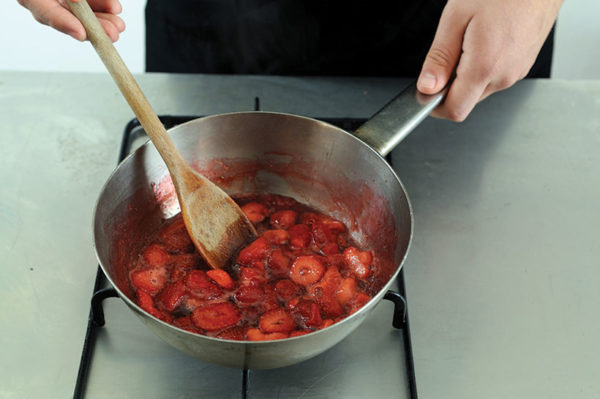
Place the chopped strawberries into a heavy-based pan with the sugar and lemon juice and gently bring the mixture to a boil.
Keep stirring lightly but frequently to ensure it doesn’t stick and burn.
Cook until the sugar has dissolved and you begin to get a jam-like consistency.
Step 8
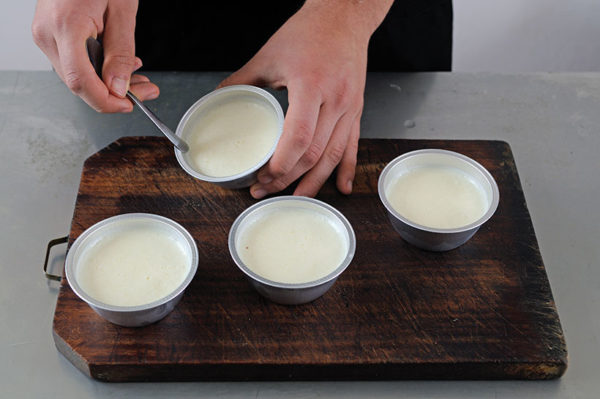
Take your panna cotta out of the fridge and use the back of a teaspoon to gently ease the panna cotta from the sides of the moulds and turn them out onto a serving plate.
If you’re struggling, dip the base of the moulds into very hot water for about 30 seconds and it should come free.
Step 9
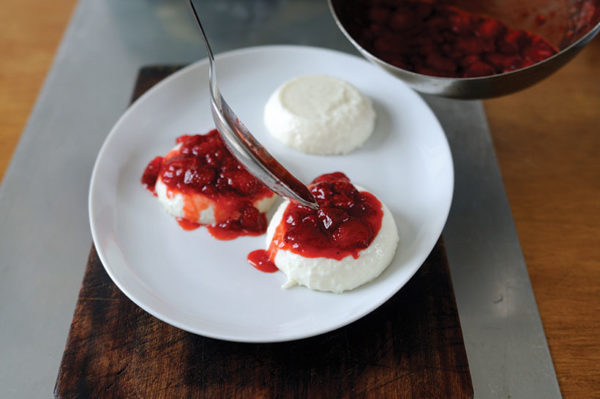
Finally, it is time to plate up. You can return the turned-out panna cotta to the fridge if you are waiting for guests, or serve them immediately.
Simply spoon the fruit reduction, either warm or cold, depending on time and taste, onto the panna cotta and take the stunning plated desserts to the table!
*TIP: This classic Italian panna cotta recipe uses traditional gelatine sheets. If you prefer, there are several vegan/vegetarian alternatives and of these, agar agar is best suited to making panna cotta.
There are plenty more delicious Italian-inspired recipes here.
Words and recipe by Mario Matassa
